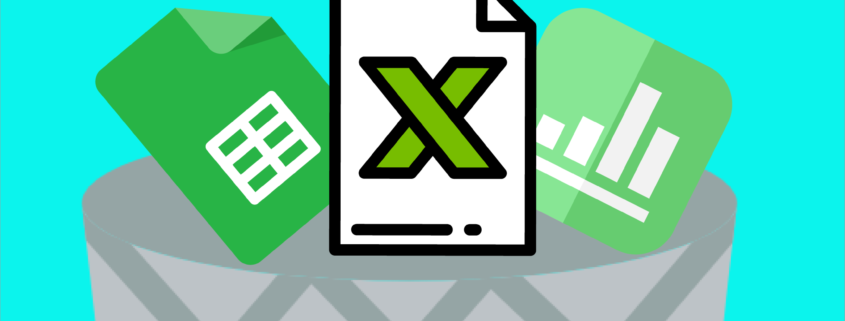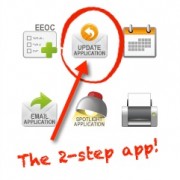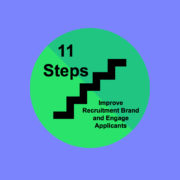Moving The Onboarding Process Away from Spreadsheets
There are two types of people: those who love spreadsheets, and those who are hopelessly disorganized. Ok, perhaps that’s an over simplification, but I’ve yet to come across a highly organized person who doesn’t have a solid grasp–and a tinge of excitement–for creating and using spreadsheets.
That being said, in some instances your favorite spreadsheet application, whether it be Sheets, Excel, Numbers, or something else, is being made obsolete by the emergence of new SaaS platforms. These process-specific solutions can organize data and present insights far easier than through the use of spreadsheets. Employee onboarding is one of the latest processes to transition from a spreadsheet-driven labor of love to SaaS empowered, laborless process.
Employee Onboarding with Spreadsheets
Listen, I get it. I still love spreadsheets too. I can control how my data is organized and who can change the document. I can always build onto a spreadsheet as my processes change and, more than anything, I’m comfortable with my spreadsheets. But control and comfort aren’t everything!
Sometimes you need to let go of absolute control, get a little uncomfortable, and take a step (or leap) forward to improve your outcomes. Let’s take a look at how employee onboarding software can help you get better results by abandoning spreadsheets, back-and-forth emails, and the timesuck of data entry. To illustrate, we’ll use a dramatized scenario of employee onboarding that you may find familiar.
Monitoring New Hire Progress
You’ve just finished hiring for a hard-to-fill position and as hiring manager you couldn’t be happier. The new hire meets all your requirements for qualifications, fit, and potential. In order to ensure that your new employee’s onboarding experience goes as smoothly as possible, you turn to you trusty spreadsheet.
Your organization has a number of activities and tasks planned for new hires. You and others will use the spreadsheet to monitor each employee’s progress through the onboarding process.
Tracking New Hire Paperwork
The first step is for the new employee to complete the new hire paperwork. You’ve organized this paperwork in nice little packets that you deliver to the employee. After delivering the paperwork, you enter “yes” in the appropriate cell under the column heading “Delivered”, followed by “in progress” in the cell under the column heading “Paperwork”. Progress!
Delivering Reminders to New Hires
You’ve asked the employee to complete the paperwork in two days and submit to the HR coordinator. But on the second day, you receive an email from the coordinator stating that she hasn’t received the paperwork–she’s colored the “in progress” cell yellow in your shared spreadsheet. So you send a helpful reminder via email to the new hire. And cross your fingers.
Coordinating Oboarding Duties for HR
Alas, on the third day you see that the shared spreadsheet is still showing paperwork as “in progress”. So you color fill your “in progress” cell with red and craft another message to the new hire, letting him know that the paperwork must be completed today. Drats!
Fifteen minutes later, you receive a reply from the new hire stating that he has, in fact, submitted his paperwork. So you email your HR coordinator to confirm this. She confirms via email and apologizes for not updating the spreadsheet. You go back to the spreadsheet, change “in status” to “complete”, color the cell green, and move onto the next item…but not before sending another email to your new hire, apologizing for the mix up.
Recap
Emails: 4
Data Entry: 5
Outcome: New hire completes paperwork on time, but questions whether HR has it all together. You’re stress level is high and you haven’t even finished your morning coffee. You curse the stars.
Employee Onboarding with Onboarding Software
After hiring your new employee, you change the candidate status to “hired” within your applicant tracking system and the new employee immediately appears in your employee onboarding software. Your new hire receives an email that invites him to login to the platform.
Upon logging in, the new hire sees a dashboard with a list of required tasks to complete and their respective due dates. As the employee completes each task, the associated status changes to complete. If the new hire is close to missing a deadline, an automated email and in-system reminder is triggered.
As hiring manager, you can easily see the status of all items. Your HR coordinator has visibility as well, ensuring that your entire onboarding team is on the same page.
Recap
Emails: 1, plus any reminders (all automated)
Data Entry: 0 (after initial setup, new hires receive required tasks based on role, location or other criteria).
Outcome: New hire completes paperwork on time and is impressed by simplicity and ease of system. You smile behind your warm mug of coffee as you review the real-time status of multiple new hires at a glance. Success!
Beyond the First Few Weeks with Spreadsheets and Calendars
As a forward-looking HR professional, you know that onboarding is more than just the first few weeks. So in your spreadsheet you’ve included line items for employee engagement activities to occur over the course of each new hire’s first year. And you’ve even gone one step further: you created calendar events and reminders that align with the activity due dates in your spreadsheet. The calendar will alert you of upcoming tasks, and the spreadsheet will help you report on your team’s efforts. Very slick!
Recap
Data Entry: Track activities for each new hire in spreadsheet. Create calendar events and reminders for each new hire.
Email: Compose and send emails with instructions/calendar request to each new hire. Remind and support HR team via email ahead of each activity.
Outcome: You succeed (sometimes) with engaging your new hires within the first year, but you’re constantly managing calendars, emails, and your master spreadsheet.
Beyond the First Few Weeks with Onboarding Software
When initially implementing your onboarding software, you replicate your existing onboarding process for new employees within the system. This includes scheduling all engagement activities, reminders, and emails for both new hires and other employees involved in the employee onboarding process. Once this work is completed up front, the system automates all necessary communications and status changes. Additions and edits to your onboarding process are easily achieved by adjusting workflow settings, and you can easily report on your efforts through the system.
Recap
Emails: Compose as many email templates as you need, once. Edit templates as needed.
Data Entry: During initial setup, plan employee engagement activities based on role, location and other criteria. The system takes it from there.
Outcome: HR saves time and effortlessly ensures that the onboarding team is ready and prepared to execute on an employee engagement strategy. New hires are never blindsided by calendar or email requests on short notice.
Choosing Employee Onboarding Software
Whether you’re ready to move your onboarding process away from spreadsheets or not, it’s probably a good time to start looking at your options for employee onboarding software. This is especially the case for organizations that are battling employee turnover. The use of spreadsheets is time-consuming and will take away valuable HR time that is better used in engaging employees. So if your organization is looking to deploy a comprehensive employee engagement strategy, employee onboarding software is likely a must.
On the other hand, if you’re organization does little in the way of employee onboarding or engagement, you may not need onboarding software–though you better have one heck of an ATS to deal with a lot of rehiring!
ExactHire provides applicant tracking software and employee onboarding software designed to help SMBs grow efficiently by reducing turnover and maximizing the time of HR professionals. To learn more about our solutions, please contact us today.









